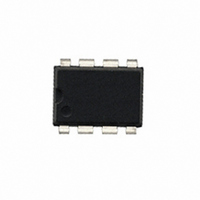604-00038 Parallax Inc, 604-00038 Datasheet - Page 3

604-00038
Manufacturer Part Number
604-00038
Description
IC SENSOR TOUCH/PROXMTY 1CH 8DIP
Manufacturer
Parallax Inc
Series
QProx™r
Type
Capacitiver
Datasheet
1.604-00038.pdf
(12 pages)
Specifications of 604-00038
Touch Panel Interface
1, 2-Wire
Number Of Inputs/keys
1 Key
Resolution (bits)
14 b
Data Interface
Serial
Voltage Reference
Internal
Voltage - Supply
2.5 V ~ 5.5 V
Current - Supply
1.5mA
Operating Temperature
0°C ~ 70°C
Mounting Type
Through Hole
Package / Case
8-DIP (0.300", 7.62mm)
Output Type
Logic
Input Type
Logic
Product
Microcontroller Accessories
Lead Free Status / RoHS Status
Lead free / RoHS Compliant
Interface
-
Lead Free Status / RoHS Status
Lead free / RoHS Compliant, Lead free / RoHS Compliant
can be made into a sparse mesh (Figure 1-3) having lower
Cx than a solid plane. Sensitivity may even remain the same,
as the sensor will be operating in a lower region of the gain
curves.
1.3.2 K
Like all capacitance sensors, the QT113 relies on Kirchoff’s
Current Law (Figure 1-4) to detect the change in capacitance
of the electrode. This law as applied to capacitive sensing
requires that the sensor’s field current must complete a loop,
returning back to its source in order for capacitance to be
sensed. Although most designers relate to Kirchoff’s law with
regard to hardwired circuits, it applies equally to capacitive
field flows. By implication it requires that the signal ground
and the target object must both be coupled together in some
manner for a capacitive sensor to operate properly. Note that
there is no need to provide actual hardwired ground
connections; capacitive coupling to ground (Cx1) is always
sufficient, even if the coupling might seem very tenuous. For
example, powering the sensor via an isolated transformer will
provide ample ground coupling, since there is capacitance
between the windings and/or the transformer core, and from
the power wiring itself directly to 'local earth'. Even when
battery powered, just the physical size of the PCB and the
object into which the electronics is embedded will generally
be enough to couple a few picofarads back to local earth.
1.3.3 V
When detecting human contact (e.g. a fingertip), grounding
of the person is never required. The human body naturally
has several hundred picofarads of ‘free space’ capacitance to
the local environment (Cx3 in Figure 1-4), which is more than
two orders of magnitude greater than that required to create
a return path to the QT113 via earth. The QT113's PCB
however can be physically quite small, so there may be little
‘free space’ coupling (Cx1 in Figure 1-4) between it and the
environment to complete the return path. If the QT113 circuit
ground cannot be earth grounded by wire, for example via
the supply connections, then a ‘virtual capacitive ground’ may
be required to increase return coupling.
A ‘virtual capacitive ground’ can be created by connecting the
QT113’s own circuit ground to:
Free-floating ground planes such as metal foils should
maximize exposed surface area in a flat plane if possible. A
square of metal foil will have little effect if it is rolled up or
(1) A nearby piece of metal or metallized housing;
(2) A floating conductive ground plane;
(3) A nail driven into a wall;
(4) A larger electronic device (to which its output might be
connected anyway).
IRCHOFF
Figure 1-3 Mesh Electrode Geometry
IRTUAL
C
’
S
APACITIVE
C
URRENT
G
L
ROUNDS
AW
- 3 -
crumpled into a ball. Virtual ground planes are more effective
and can be made smaller if they are physically bonded to
other surfaces, for example a wall or floor.
1.3.4 F
The electrode can be prevented from sensing in undesired
directions with the assistance of metal shielding connected to
circuit ground (Figure 1-5). For example, on flat surfaces, the
field can spread laterally and create a larger touch area than
desired. To stop field spreading, it is only necessary to
surround the touch electrode on all sides with a ring of metal
connected to circuit ground; the ring can be on the same or
opposite side from the electrode. The ring will kill field
spreading from that point outwards.
If one side of the panel to which the electrode is fixed has
moving traffic near it, these objects can cause inadvertent
detections. This is called ‘walk-by’ and is caused by the fact
that the fields radiate from either surface of the electrode
equally well. Again, shielding in the form of a metal sheet or
foil connected to circuit ground will prevent walk-by; putting a
small air gap between the grounded shield and the electrode
will keep the value of Cx lower and is encouraged. In the
case of the QT113, sensitivity can be high enough
(depending on Cx and Cs) that 'walk-by' signals are a
concern; if this is a problem, then some form of rear shielding
may be required.
1.3.5 S
The QT113 can be set for one of 2 gain levels using option
pin 5 (Table 1-1). This sensitivity change is made by altering
the internal numerical threshold level required for a detection.
Note that sensitivity is also a function of other things: like the
value of Cs, electrode size, shape, and orientation, the
composition and aspect of the object to be sensed, the
thickness and composition of any overlaying panel material,
and the degree of ground coupling of both sensor and object.
1.3.5.1 Increasing Sensitivity
In some cases it may be desirable to increase sensitivity
further, for example when using the sensor with very thick
panels having a low dielectric constant.
Sensitivity can often be increased by using a bigger
electrode, reducing panel thickness, or altering panel
composition. Increasing electrode size can have diminishing
returns, as high values of Cx will reduce sensor gain (Figures
C
S EN SO R
X1
IELD
ENSITIVITY
Figure 1-4 Kirchoff's Current Law
S
HAPING
Su rro und in g e nv iro nm e n t
S e n se E le ctro de
C
X2
C
X3





















